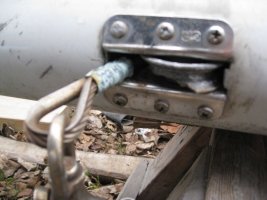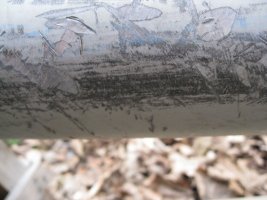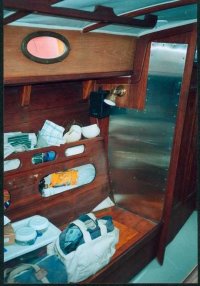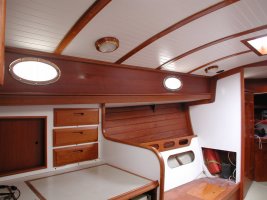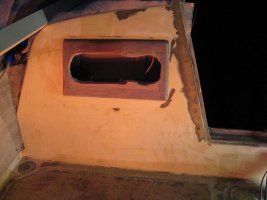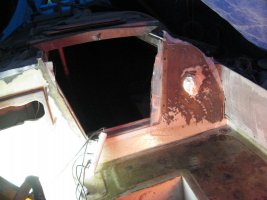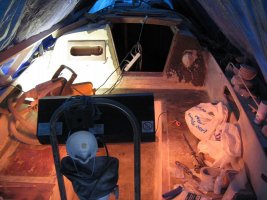sveinutne
Member III
I guess 40 years of saltwater and high humidity has taken the best out of the brass through- hull pipes. So now I am replacing all of them. The good thing is that we finely have gotten some warmer weather. Today it was 12 degrees, and I could start on the fiberglass work. With a 2000 watt IR lamp to get some extra heat I could start to put fiberglass in the cockpit. After removing the 3 mm thick diamond pattern anti-skid mat, the floor in the cockpit was a bit wobbly, so two layers of new fiberglass would do it good.
I have gotten samples on TBS – Non-slip Deck covering, and Antislide, and also tested some paint with anti slide powder. TBS cost about €75/m2 and Antislide €29/m2. TBS looked and felt better then Antislide, but the price was more than the double, so it was a hard choice. Powder to put in the paint to get anti slide effect was at a very low price, so it would be about 1-3 €/m2 depending on how much powder one mix in, so the cost will be in the polyester and fiberglass, depending on how many layers one would like to put on. From my short testing I got the feeling that paint with powder would give almost the same friction as the Antislide or other friction cover. I have tried to find the results of some comparisons test on the net, but I have not found any. If I do not find something very negative with the paint with friction I will start with it. If I later want to use some TBS or Antislide, I guess I can just sand gently and glue it on. So now all the top of the boat will get a layer or two of new fiberglass and some hardtop with anti slide powder in the top paint. I am putting the polyester directly on the molded in anti skid from Ericson. I hope this will give good bounding and no negative reaction. So far it looks OK.
I have gotten samples on TBS – Non-slip Deck covering, and Antislide, and also tested some paint with anti slide powder. TBS cost about €75/m2 and Antislide €29/m2. TBS looked and felt better then Antislide, but the price was more than the double, so it was a hard choice. Powder to put in the paint to get anti slide effect was at a very low price, so it would be about 1-3 €/m2 depending on how much powder one mix in, so the cost will be in the polyester and fiberglass, depending on how many layers one would like to put on. From my short testing I got the feeling that paint with powder would give almost the same friction as the Antislide or other friction cover. I have tried to find the results of some comparisons test on the net, but I have not found any. If I do not find something very negative with the paint with friction I will start with it. If I later want to use some TBS or Antislide, I guess I can just sand gently and glue it on. So now all the top of the boat will get a layer or two of new fiberglass and some hardtop with anti slide powder in the top paint. I am putting the polyester directly on the molded in anti skid from Ericson. I hope this will give good bounding and no negative reaction. So far it looks OK.


